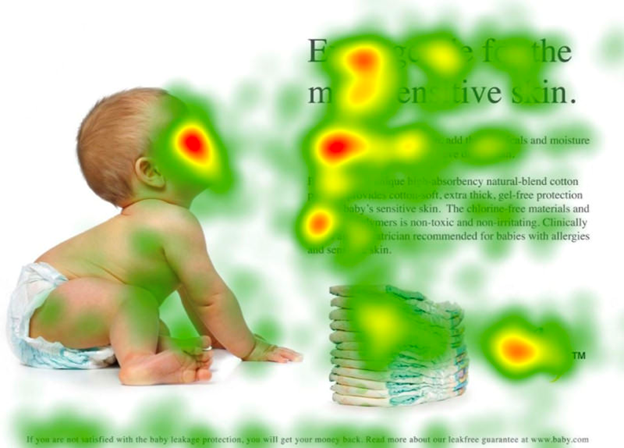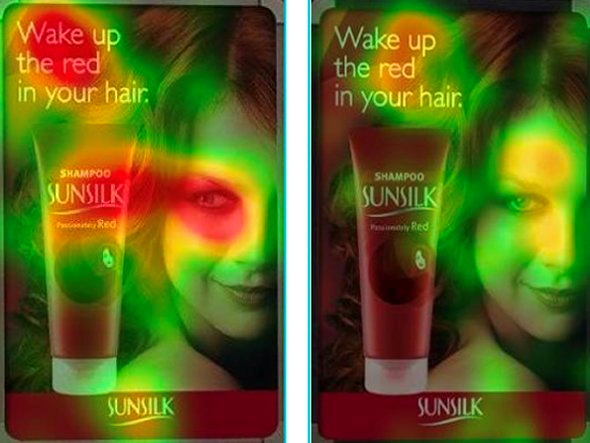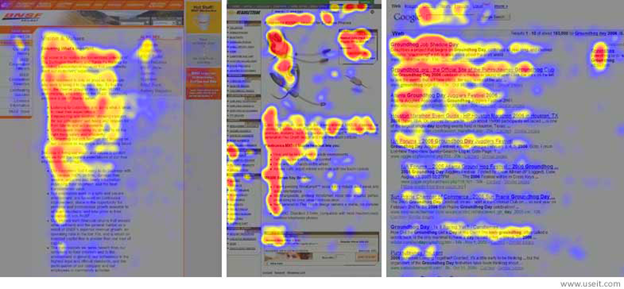Countless eye tracking studies demonstrate that people do not read online in the same, concentrated manner as they do printed material. People scan online content.
There are different types of scanning behavior but the most common is the F-shaped scan, where eye movements track in the shape of the letter F. The following are eye tracking heatmaps demonstrating the F-shaped scanning behavior:
This predictable online behavior can be harnessed to help ensure the messages you want to convey are seen and ultimately sink in.
Lead With Key Messages
Given this fact of online behavior, it is important to weave key messaging into online content where it is most likely to be seen. In the context of text, that means at the beginning of headlines and sub headlines and within the first sentences of paragraphs.
In order to both harness scanning behavior and make it easier for the reader to consume key messages, consider surrounding those key messages with white space to make them stand out and to make it easier for the eye to begin a scan.
This tactic is most easily deployed with a headline but it could also be used by making key message paragraphs a single sentence long.
Ideally, boil down your key messages to three to five words to facilitate ease of consumption.
Thumb-Stopping Elements
Weaving your key messages into the headlines and paragraphs of an article or blog post is an important aspect of being understood, but if you are promoting that content in social media channels, there’s still work to do in order to earn the attention of your target audience.
The most prominent feature of social media channels is the news feed. When users log into their favorite social media channel, the first thing they will likely do is scroll through their feed to get the latest “news” from their network.
Mobile accounts for nearly 80% of visits to social sites in the US, so attention spans are fleeting.
People are far more likely to engage with a social media post that includes a visual element such as a photograph, illustration, chart or video. Use multimedia that supports your key messages.

Photographs of people are especially effective at stopping users from scrolling.
Human beings are hard-wired to pay attention to other people’s eyes. This is likely a legacy survival mechanism when noticing other people focusing on potential dangers in the wilderness could’ve meant the difference between life and death for early humans. This behavior is illustrated in heatmap studies:

Not only do people focus on the eyes of other humans, they also follow their gaze:

Here’s another example of a gaze pattern following the eyes of the subject.
The image on the right shows the gaze intensity of eye tracking participants when shown an image of a person who is looking directly into the camera.
The image on the left shows how people will follow the gaze of the subject of an image. You can harness this dynamic to draw the attention of viewers into your key messages, in this case the product’s brand name.

Conversely, if you have messages that must be posted but would prefer it not attract a great deal of attention or engagement, publish your content as plain text. This scenario would typically occur when you’ve got bad news to convey that isn’t critical but must be conveyed.






